- Home
- Jane Austen
The Annotated Emma
The Annotated Emma Read online
AN ANCHOR BOOKS ORIGINAL, MARCH 2012
Copyright © 2012 by David M. Shapard
All rights reserved. Published in the United States by Anchor Books, a division of Random House, Inc., New York, and in Canada by Random House of Canada Limited, Toronto.
Anchor Books and colophon are registered trademarks of Random House, Inc.
Cataloging-in-Publication Data is available at the Library of Congress
eISBN: 978-0-307-95024-6
Book design by Rebecca Aidlin
Maps by Robert Bull
Cover photograph © V&A Images
Cover design by Megan Wilson
www.anchorbooks.com
v3.1
Portrait of a young woman (The Duchess of Wellington).
[From Lord Ronald Sutherland Gower, Sir Thomas Lawrence (London, 1900), p. 152]
[List of Illustrations]
Annotations to the Front Cover
1. This is part of a machine-made dress from 1810–1811 owned by the Victoria and Albert Museum. Clothes were increasingly manufactured by machine in this early stage of the Industrial Revolution, making them cheaper and encouraging the growing use of cotton, which was especially suited to mechanical production. The fabric beneath the net of this dress is most likely muslin, a light cotton that had become the most popular material for women’s gowns and is often referred to in Austen’s novels, including this one.
2. The white color of the underlying fabric was common for gowns; more than one character in Emma refers to her white gown. White was associated with classical dress, which was the principal inspiration for female fashion during this period.
3. The short sleeves and relatively low neckline indicate that this is an evening dress. Such features, along with the lightweight muslin, necessitated the use of shawls and other accessories for warmth. At an evening dance in Emma one character in poor health, Jane Fairfax, is urged by her aunt to bring a shawl and to wear a tippet, a small cape, when going through a cool passageway.
4. The borders on this gown are made of chenille, a silk and wool material used for edging on clothes and furniture. Many gowns of the time had such trimmings, and one character in Emma, Mrs. Elton, displays a particular fondness for them. Women sometimes added their own embroidered trimmings to their clothing.
Contents
Cover
Title Page
Copyright
Annotations to the Front Cover
Illustrations
Notes to the Reader
Acknowledgments
Introduction
EMMA
VOLUME I
(Note: The following chapter headings are not found in the novel. They are added here by the editor to assist the reader.)
I Emma and the Weston Marriage
II Mr. Weston and Frank Churchill
III Emma and Harriet Smith
IV Emma and Harriet’s Affections
V Mr. Knightley and Mrs. Weston on Emma
VI Emma’s Portrait of Harriet
VII Robert Martin’s Proposal
VIII Emma and Mr. Knightley Quarrel
IX Collecting Charades
X Emma and Harriet’s Charitable Visit
XI The Arrival of John and Isabella
XII Mr. Woodhouse’s Complaints to Isabella
XIII The Preparations for Dinner at the Westons
XIV The Dinner at the Westons
XV The Surprise Proposal
XVI Emma’s Self-Reproach
XVII Emma Tells the News to Harriet
XVIII Emma and Mr. Knightley Discuss Frank Churchill
VOLUME II
I The News of Jane Fairfax’s Arrival
II The History of Jane Fairfax
III The News of Mr. Elton’s Marriage
IV Mr. Elton’s Bride
V The Arrival of Frank Churchill
VI Emma Talks with Frank Churchill
VII The Invitation to the Coles’
VIII The Coles’ Party
IX Encounters at Ford’s Shop
X The Visit to Miss Bates’
XI Plans for a Dance
XII Frank Churchill’s Departure
XIII Emma’s Feelings toward Frank Churchill
XIV The Introduction to Mrs. Elton
XV Mrs. Elton Befriends Jane Fairfax
XVI The Party at the Woodhouses’
XVII Mr. Weston Announces Frank’s Return
XVIII Mr. Weston Talks to Mrs. Elton
VOLUME III
I The Return of Frank Churchill
II The Ball
III Harriet’s Encounter with the Gypsies
IV Harriet’s New Love
V Suspicious Behavior by Frank Churchill
VI Strawberry Picking at Mr. Knightley’s
VII The Box Hill Outing
VIII Emma’s Repentance
IX The News of Mrs. Churchill’s Death
X Mr. Weston’s Astonishing News
XI Emma and Harriet on Mr. Knightley
XII Emma’s Despair
XIII Emma and Mr. Knightley
XIV Frank Churchill’s Letter of Explanation
XV Mr. Knightley on Frank Churchill’s Letter
XVI Emma Calls on Jane Fairfax
XVII The Announcement of Emma’s Engagement
XVIII Harriet’s Engagement
XIX Conclusion
Notes
Chronology
Bibliography
Maps
About the Author
Other Books by This Author
Illustrations
Portrait of a Young Woman
A Modern Country House
A Backgammon Game
A Soldier
A Vicar Receiving Tithes
A Visit to a School
The Board of Agriculture
The Vicar of Wakefield
A Shepherd and Sheep
Rural Laborers
Rural Laborers
A Woman with a Book
Furniture and Equipment for Drawing
A Sofa
A Mantelpiece
A London Printshop
A Woman with a Miniature
A Woman Holding Music
A Farmyard
A Modern Country House
A Farmhouse
A Woman with a Shawl
Looking at a Picture
A Woman Holding a Letter
An Older Country House
A Farmyard
Portrait of a Girl
A Clergyman
A Walking Dress
A Mantelpiece
Preaching a Sermon
The Court of Common Pleas
The Old Bailey—Interior
A Cottage
Curtains
Needlework Pattern
A Gentleman Giving to the Poor
A Lady Giving to the Poor
A Woman with Children
A Woman and Child at the Beach
A Woman with an Infant
Plowing a Field
Queens Square, Bloomsbury
The Old Bailey—Exterior
A Woman at the Beach
A Barrister
A Chaise
A Coach
An Entrance Gate to an Estate
A Judge
Female Evening Dress
A Grand Country House
A Drawing Room
A Woman with a Child
Male Evening Dress
A Sofa
A Carriage Drive in Front of a House
A Portrait of a Woman
A Woman at Church
Map of Bath
A Woman in Morning Dress
The House of Commons
Poor People Gathering Wood
A Woman with a Picture
Bath Assembly Rooms
A Woman Drinking Tea
A Woman at the Seaside
Feeding Animals
A Chair and a Fire Screen
A Clothing Store
A Woman with a Bonnet and Spencer
A Maid Ironing
A Maid Washing Clothes
A Wedding Dress
Furniture
A Butcher
Oxford
Carting Hay
A Walking Dress
A Poor Woman
Carriages Stopping at an Inn
Travel in a Post-Chaise
A Vicarage
A Post-Chaise
An Elderly Man
A Card Table
Harrowing a Field
A Woman in Evening Dress
A Happy Domestic Scene
A Pianoforte
Parlor Chairs
A Private Library
An Older House
Waltzing
Muslin Patterns
Muslin Patterns
A Butcher’s Boy
A Baker
A Table and Chair
The Inside of a Stable
A Drawing Room
A Woman in Evening Dress
Curtains
A Paneled Wall
A Sideboard
A Woman Dancing
A Woman in Morning Dress
A Woman with a Letter
Garden Seats
A House with a Bench Around a Tree
The Pump Room at Bath
A Barouche
A Landau
An Ice House
A Card Table
The Main London Post Office
A Writing Desk
A Woman Holding Music
A Woman in a Fancy Gown
Poor Conditions at an Inn
A Conservatory—Interior
A Conservatory—Exterior
A Private Library
The Plan of a Meal—First Course
The Plan of a Meal—Second Course
A London Street Scene
Manchester Street
Richmond Bridge
A House at Twickenham
A Ball Dress
A Meteorological Chart
A Woman with a Shawl
A Woman in Evening Dress
Dancing Steps
A Tippet
A Woman with a Tippet
A Ball Dress
A Gypsy Encampment
Hall Chairs
Gypsies
A Gypsy Woman
A Woman in Morning Dress
A Portrait of a Young Woman
A Pembroke Table
A Dining Room
Reading by Candlelight
An Older House
A Picnic
A Woman with a Bonnet
A Garden Seat
A Lady in Gypsy Costume
An Avenue of Trees
The Natural History Museum
A View of Lake Nemi
A View of the Castle of Chillon
A View over Landscaped Grounds
A Game Table
A Woman with Children
The Inside of a Stable
Fleet Street
A Funeral
Windsor
Mourning Dress
Mourning Dress
Entrance Gates
A Portrait of a Woman
A Woman in Walking Dress
A Farm Woman and Children
Dinner Dress
A Woman Drinking Tea
A Woman Writing
A Writing Desk
A Woman with a Letter
A Woman with a Ridicule
London Bridge
The Wedgwood Shop in London
The College of Physicians
A Beadle
A Sideboard
A Woman with a Child
A Dental Visit
Baby Caps
Blackfriar’s Bridge
Astley’s Amphitheatre
Astley’s Amphitheatre
A Public Coach
A Drover
A Slaughterman
A Visit to a New Mother
A Woman with Jewelry in Her Hair
A Wedding Dress
A Lady Feeding Poultry
A Poultry House
A Wedding Veil
A Wedding Veil
Notes to the Reader
Plot disclosures: Several mysteries, involving many of the main characters, are crucial to the story in Emma. Jane Austen developed these mysteries with great skill, and part of the value of an annotated edition lies in discussing the clues she provides and the way that seemingly innocuous words and actions take on special significance in the light of what is ultimately revealed. This means, however, spoiling the surprise for those unfamiliar with the story. Hence the small number of annotations where mysteries are revealed are labeled CAUTION: PLOT SPOILER to alert first-time readers to skip them if they wish to preserve the surprise. None of these annotations contain historical or other background information.
Literary interpretations: Comments on the techniques and themes of the novel, more than other types of entries, represent the personal views and interpretations of the editor. Such views have been carefully considered, but inevitably they will provoke disagreement among some readers. I can only hope that even in those cases the opinions expressed provide useful food for thought.
Differences of meaning: Many words then, like many words now, had multiple meanings. The meaning of a word that is given at any particular place is intended only to apply to the way the word is used there; it does not represent a complete definition of the word in the language of the time. Thus some words are defined differently at different points, while many words are defined only in certain places, since in other places they are used in ways that remain familiar today.
Repetitions: This book has been designed so it can be used as a reference. For this reason many entries refer the reader to other pages where more complete information about a topic exists. This, however, is not practical for definitions of words, so in some cases definitions are repeated at appropriate points.
Acknowledgments
My first and most important expressions of gratitude must go, as previously, to my editor, Diana Secker Tesdell. Once again, she has proven an invaluable source of advice and assistance throughout the preparation of this book, responding patiently to my numerous queries, identifying problems in what I submitted, suggesting better ways of expressing my thoughts, and adding her own astute insights into the novel. I am also grateful to Nicole Pedersen for her excellent assistance in preparing various aspects of the final product, as well as to others at Anchor Books.
Additional thanks should go to the staff of the Bethlehem Public Library, the New York State Library, the New York Public Library, and the Watson Library at the Metropolitan Museum of Art for helping me procure the materials essential for my research.
Finally, I must thank my mother and other members of my family for their continued encouragement and support in my endeavors.
Introduction
Emma marks in many respects the culmination of Jane Austen’s work as a novelist. It is her longest novel and the last that she was clearly able to finish to her satisfaction (the brevity and the thinness of some of the subplots in Persuasion, the one novel completed later, indicate that her failing health may have prevented her from polishing it as much as she would have done otherwise). Emma is also the novel that has most frequently been judged the finest by critics of her work.
Jane Austen was born on December 16, 1775, in Hampshire, a county southwest of London (and adjacent to Surrey, the county in which Emma is set). Her father, George Austen, was a clergyman, and her mother, Cassandra Leigh Austen, whose father was a clergyman, came from a family consisting principally of landed ge
ntry; thus Jane Austen grew up among the social class she consistently depicts in her novels. She was the second youngest of eight children, and she always remained close to her family, most especially her one sister, Cassandra. Though she attended school for only a brief period, she grew up in an atmosphere that fostered intellectual development: her father supplemented his income by running a school for boys, several of her brothers tried their hands at literary composition, and the family in general were lovers of books. They also encouraged Jane’s literary efforts, the first surviving examples of which date to age thirteen. Her earliest writings were highly comical and show the influence of other literary works of the time, many of which she satirized. As she matured, she wrote longer and more serious works, which reveal an increasing interest in the delineation of character.
Her first known completed novel was Elinor and Marianne, which was probably finished in 1795, when she was nineteen. Late in 1796 she began First Impressions, which impressed her family sufficiently that her father sent the manuscript to a publisher, who rejected it. She next produced a modified version of Elinor and Marianne, now called Sense and Sensibility, and a new novel, Susan. The latter was also submitted to a publisher, who purchased the rights but never published it.
During this time Jane Austen continued to live with her parents and her sister in her childhood home in Steventon. It was a small rural village that exposed her to the types of people depicted in her novels; she was also exposed to rural life in other parts of England through visits to relatives. Her surviving letters from this period indicate regular attendance at balls and other social events, as well as an interest in men, though no sustained romance or offer of marriage. In 1801, at the age of twenty-five, she experienced her first major change when her father retired and moved the family to the popular spa and resort town of Bath, where they lived for the next four years. After Mr. Austen’s death in 1805, Mrs. Austen and her two daughters left Bath and settled eventually in Southampton, a port city in Hampshire. Throughout this time Jane Austen did not finish any other novels, though she began at least one, the fragment called The Watsons. She also rejected, after briefly accepting, her one known offer of marriage. Finally, in 1809, she and her mother and sister were able to move into a cottage owned by her brother Edward in the Hampshire village of Chawton, a community with many affinities to that depicted in Emma.
This quieter setting allowed her to dedicate herself more fully to writing. She turned first to revising Sense and Sensibility and managed to get the new version published in October 1811, with a title page that simply said “By a Lady.” It enjoyed modest sales, along with a couple of favorable reviews. She next returned to First Impressions, a revised version of which was published in January 1813 as Pride and Prejudice. It experienced even greater success and was followed by Mansfield Park, a completely original composition that was finished in 1813 and published in May 1814. In January of that year she began work on Emma, completing it in March 1815. By this time her novels, while not bestsellers, had developed a following—though she continued to remain anonymous, identifying herself on the title page only as the author of her previous books. Informal knowledge of her identity had grown sufficiently, however, that in late 1815, while visiting her brother in London, she was told that the Prince Regent, the reigning monarch of Britain, was a great devotee of her novels, keeping copies in each of his royal residences, and was interested in having her next novel dedicated to him. Such a dedication accordingly appeared at the beginning of Emma when it was published in December 1815. Emma, though not the biggest seller of her novels, enjoyed the distinction of receiving more reviews than any previous book, including a long and mostly positive one appearing in March 1816 by Sir Walter Scott, the most popular author of the day.

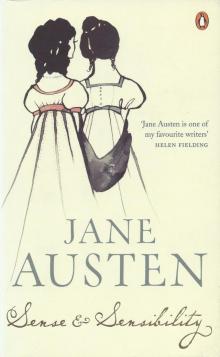 Sense and Sensibility
Sense and Sensibility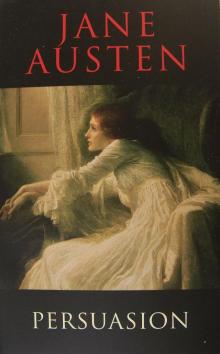 Persuasion
Persuasion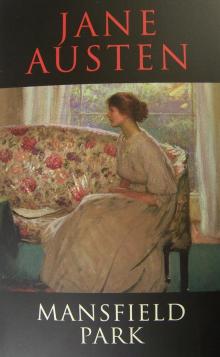 Mansfield Park
Mansfield Park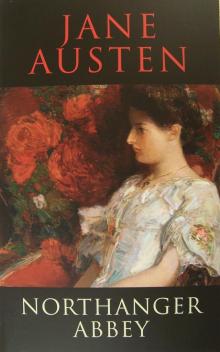 Northanger Abbey
Northanger Abbey Pride and Prejudice and Zombies
Pride and Prejudice and Zombies Pride and Prejudice
Pride and Prejudice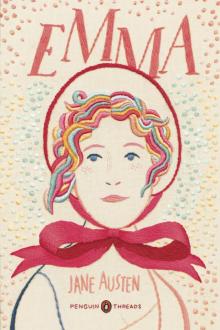 Emma
Emma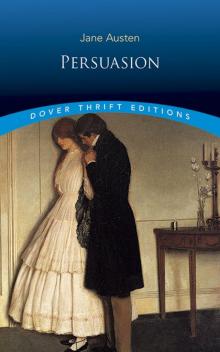 Persuasion (Dover Thrift Editions)
Persuasion (Dover Thrift Editions)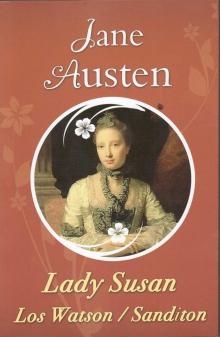 Lady Susan
Lady Susan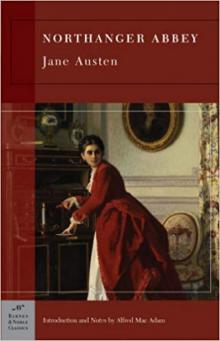 Northanger Abbey (Barnes & Noble Classics)
Northanger Abbey (Barnes & Noble Classics)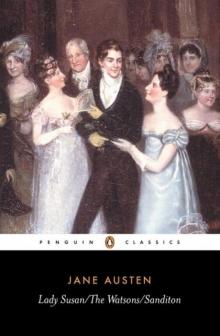 Lady Susan, the Watsons, Sanditon
Lady Susan, the Watsons, Sanditon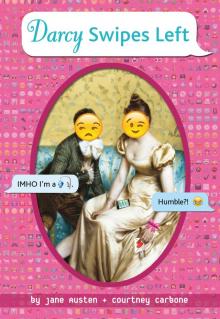 Darcy Swipes Left
Darcy Swipes Left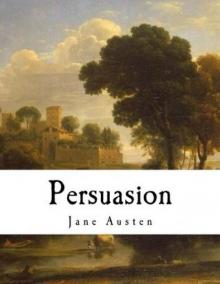 Persuasion: Jane Austen (The Complete Works)
Persuasion: Jane Austen (The Complete Works)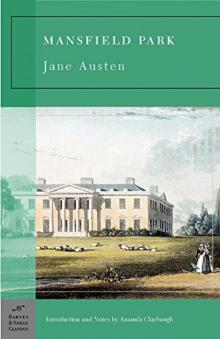 Mansfield Park (Barnes & Noble Classics Series)
Mansfield Park (Barnes & Noble Classics Series) Sense and Sensibility (Barnes & Noble Classics Series)
Sense and Sensibility (Barnes & Noble Classics Series)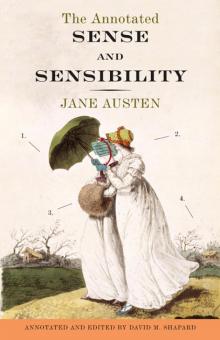 The Annotated Sense and Sensibility
The Annotated Sense and Sensibility Pride and Prejudice (Clandestine Classics)
Pride and Prejudice (Clandestine Classics)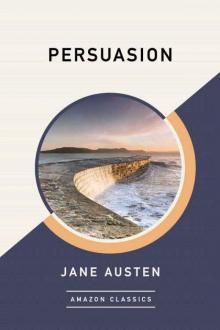 Persuasion (AmazonClassics Edition)
Persuasion (AmazonClassics Edition)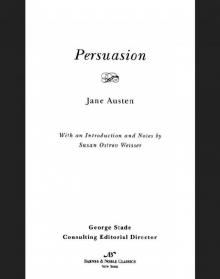 Persuasion (Barnes & Noble Classics Series)
Persuasion (Barnes & Noble Classics Series)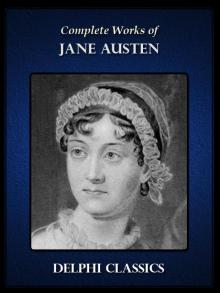 Complete Works of Jane Austen
Complete Works of Jane Austen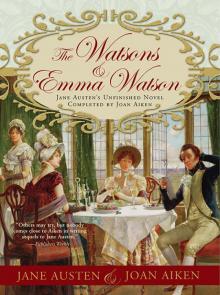 The Watsons and Emma Watson
The Watsons and Emma Watson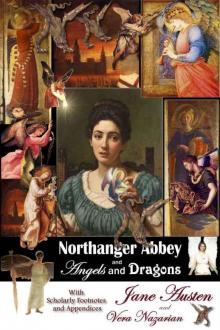 Northanger Abbey and Angels and Dragons
Northanger Abbey and Angels and Dragons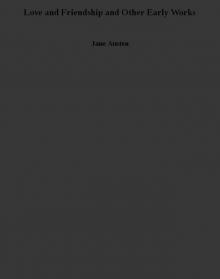 Love and Friendship and Other Early Works
Love and Friendship and Other Early Works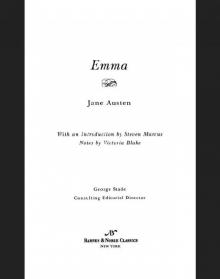 Emma (Barnes & Noble Classics Series)
Emma (Barnes & Noble Classics Series) Sanditon
Sanditon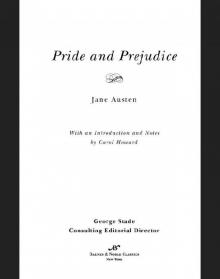 Pride and Prejudice (Barnes & Noble Classics Series)
Pride and Prejudice (Barnes & Noble Classics Series)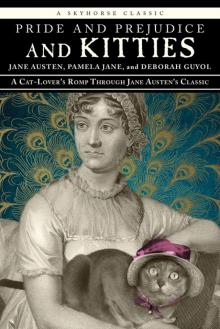 Pride and Prejudice and Kitties
Pride and Prejudice and Kitties The Annotated Northanger Abbey
The Annotated Northanger Abbey Oxford World’s Classics
Oxford World’s Classics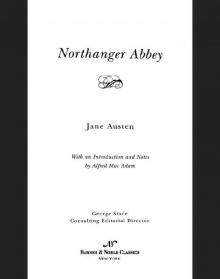 Northanger Abbey (Barnes & Noble Classics Series)
Northanger Abbey (Barnes & Noble Classics Series)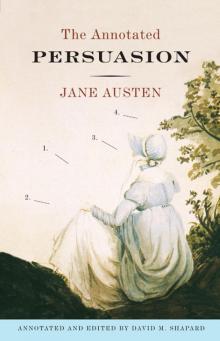 The Annotated Persuasion
The Annotated Persuasion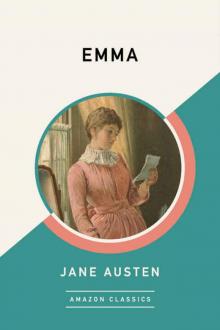 Emma (AmazonClassics Edition)
Emma (AmazonClassics Edition)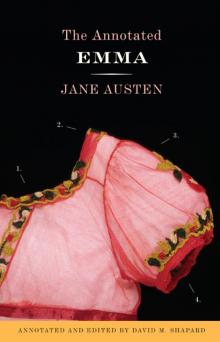 The Annotated Emma
The Annotated Emma The Annotated Mansfield Park
The Annotated Mansfield Park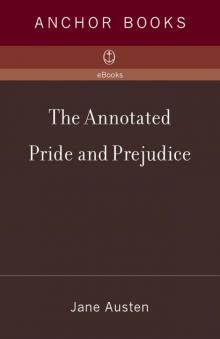 The Annotated Pride and Prejudice
The Annotated Pride and Prejudice